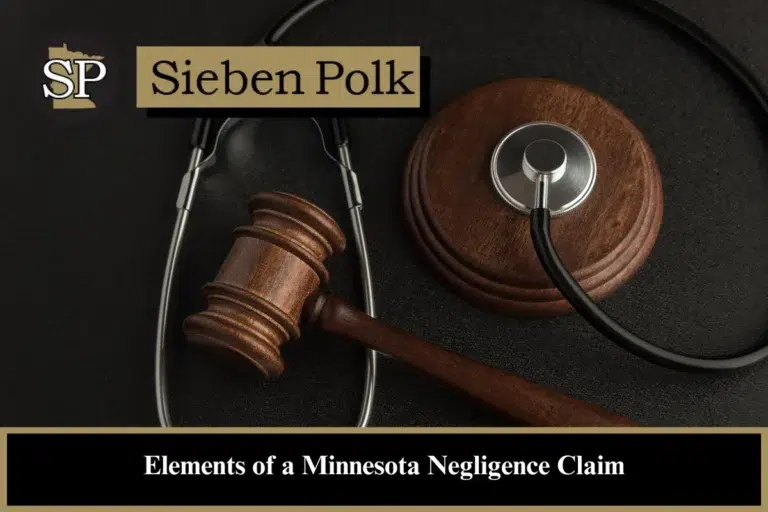Understanding the time it takes to resolve a personal injury lawsuit is crucial for accident victims seeking compensation. The timeline for personal injury cases in Minnesota can vary widely depending on several factors, but this guide will give you an overview of what to expect.
Navigate This Page
What Affects the Duration of a Personal Injury Lawsuit?
The length of time a personal injury lawsuit takes in Minnesota is influenced by various factors. Some cases may resolve in a few months, while others could take over a year.
Key Factors That Impact the Duration of Your Case
Several factors contribute to the timeline of your case. These include:
- Injury severity: Serious or long-term injuries may require longer recovery and more documentation.
- Complexity of liability: Multiple parties or unclear liability can extend the process.
- Evidence availability: Strong evidence can speed up the process, while missing or disputed evidence can delay it.
- Negotiation delays: Extended negotiations with insurance companies can cause delays.
- Need for expert testimony: Some cases require additional evidence or expert witnesses, which can add time.
- Court scheduling: Courts may have delays or backlogs that affect trial scheduling.
- Defendant’s settlement willingness: A defendant who is not willing to settle fairly can extend the case.
- Attorney experience: Experienced attorneys can expedite the process based on their prior knowledge.
What Are the Key Phases of a Minnesota Personal Injury Lawsuit?
While every case is different, most personal injury lawsuits in Minnesota follow a similar structure. Here’s a general timeline of the typical steps involved:
Step 1 – Initial Consultation with an Attorney
The first step is meeting with an experienced personal injury lawyer. Ideally, this should take place within days after the accident to ensure critical evidence is not lost.
Step 2 – Investigation and Evidence Gathering
Your attorney will gather evidence to support your claim, including medical records, witness statements, and accident reports. This process can take anywhere from several weeks to a few months.
Step 3 – Sending a Demand Letter
Once evidence is collected, a demand letter will be sent to the insurance company, outlining the claim and requesting a fair settlement. The insurance company typically responds within a few weeks.
Step 4 – Negotiations for a Settlement
After the insurance company’s response, negotiations for a settlement will begin. This stage may take several weeks or months, depending on the complexity of the case.
Step 5 – Filing a Lawsuit (If Necessary)
If negotiations fail, your attorney may proceed with filing a lawsuit before the statute of limitations expires (typically two years from the accident).
Step 6 – Discovery Phase
Discovery is the process of exchanging evidence with the at-fault party. This phase typically lasts several months as both parties gather and review documents.
Step 7 – Trial (If Settlement Fails)
If the case does not settle, trial proceedings may begin. Court backlogs can delay the trial, but the potential for a higher settlement through litigation may make it worthwhile.
How Can an Experienced Personal Injury Lawyer Help Speed Up Your Case?
An experienced Minnesota personal injury lawyer can help streamline the process by handling negotiations, gathering evidence efficiently, and providing you with realistic expectations throughout the case. They can guide you through each step to ensure you get the compensation you deserve as quickly as possible.
Get a Free Consultation to Learn More About Your Personal Injury Lawsuit Timeline
The best way to understand how long your personal injury lawsuit may take is to consult with a knowledgeable personal injury lawyer. Contact Sieben Polk P.A. today for a free consultation and get an estimate based on your specific situation.




